Solving a word problem is a central skill that a mathematical education tries to teach to students. We show here how to solve a word problem in a systematic fashion, and check that the solution is correct. We first show step-by-step how to solve a simple word problem on middle school level and check that the solution is correct. We summarise the approach in a simple template. Finally, we show a video where we use this template to solve another similar word problem.
Solving an example problem
The problem: The sum of three consecutive numbers is 171. What are these numbers?
We construct the solution by a sequence of questions and actions. On the left, we state the question/action, on the right, we show how the answer is expressed as structured derivation. So lets start solving the problem:
What are the quantities involved? There are three numbers. Lets call them a,b, and c. The declaration on the right names these quantities and gives their value ranges (in this case they are all real numbers R)

What do we know about these quantities? We know that they are successive numbers, with a being the smallest one. And we know that their sum is 171. We write these facts as assumptions.
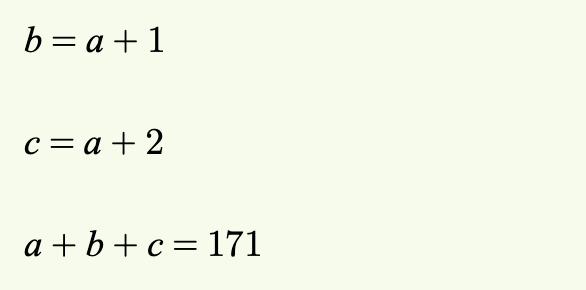
What answer are we looking for? We are looking for the values of a,b, and c. We write this as a logical statement, where the question marks stand for the values (that we still need to compute). We use the logical and symbol in the expression.

How should we proceed? We decide to first calculate the value of variable a from the equation, and then use this value to give the answer. We thus need two steps, as shown on the right. These steps are shown as two conclusion steps.
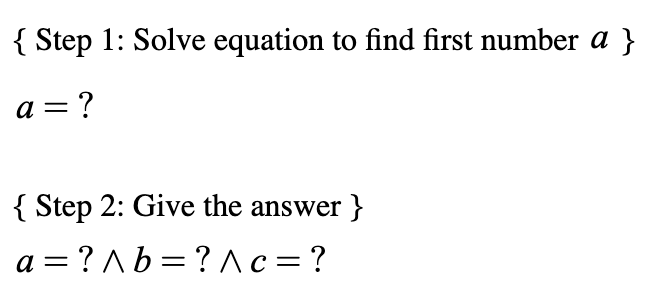
Solve the equation! We now work on the first step, and solve the equation to find the value of variable a. This is done in a nested derivation, as shown below. Solving the equation gives us the value for a that we are looking for. We get that a = 56
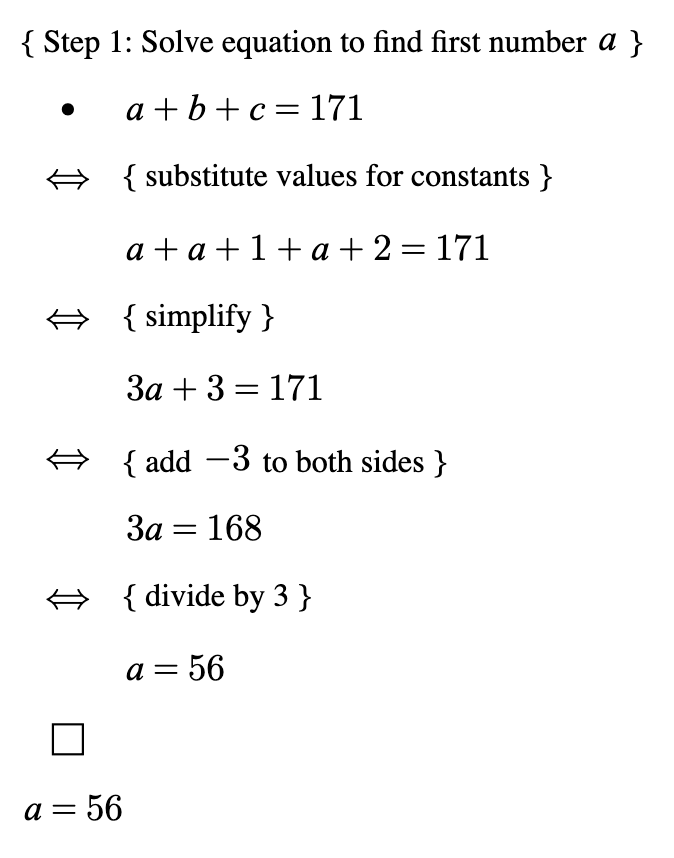
Give the answer! Now that we know the value of a, we can directly compute the value of b and c. We give these values in the answer.

The Full solution
The full solution with the steps described above looks as follows:
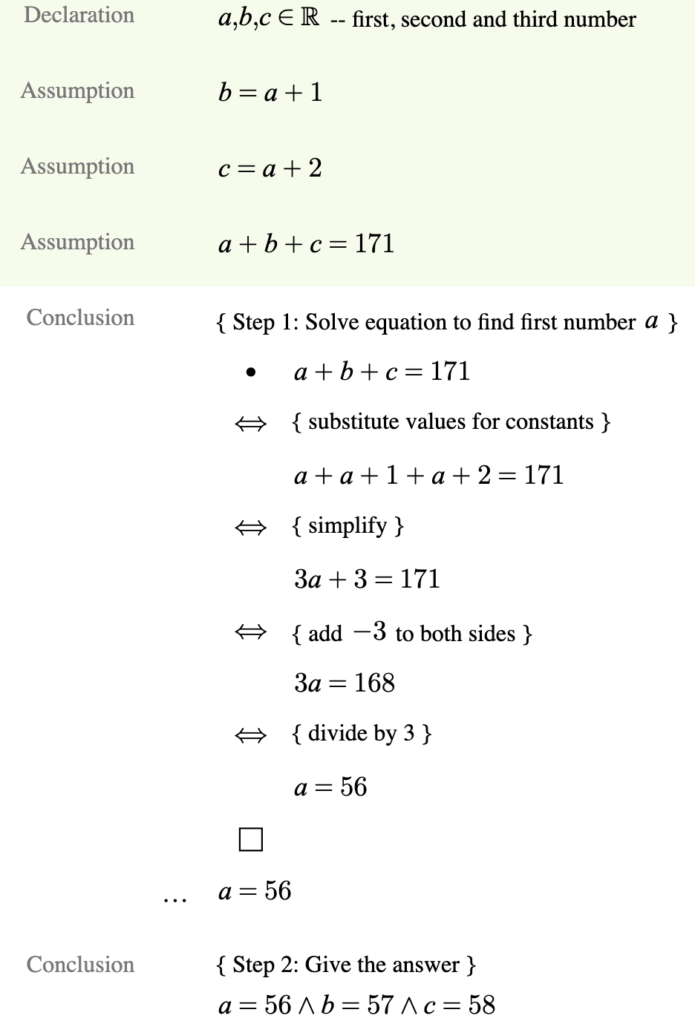
The solution amounts to filling in the information that is needed, step by step:
- List the names of variables as declarations
- State what we know about these variables as assumptions
- Describe the steps that are needed to solve the problem, as a sequence of conclusion steps
- Finally, fill in the detailed arguments needed to derive these conclusions (like solving the equation above), as nested derivations for the conclusions.
Checking the correctness of the solution
Now that we have found a solution, we can check whether the solution is correct. The checker checks each step in the nested calculation, as well as both conclusion. The check marks on the right show that each step is correct, so the solution as a whole is correct.
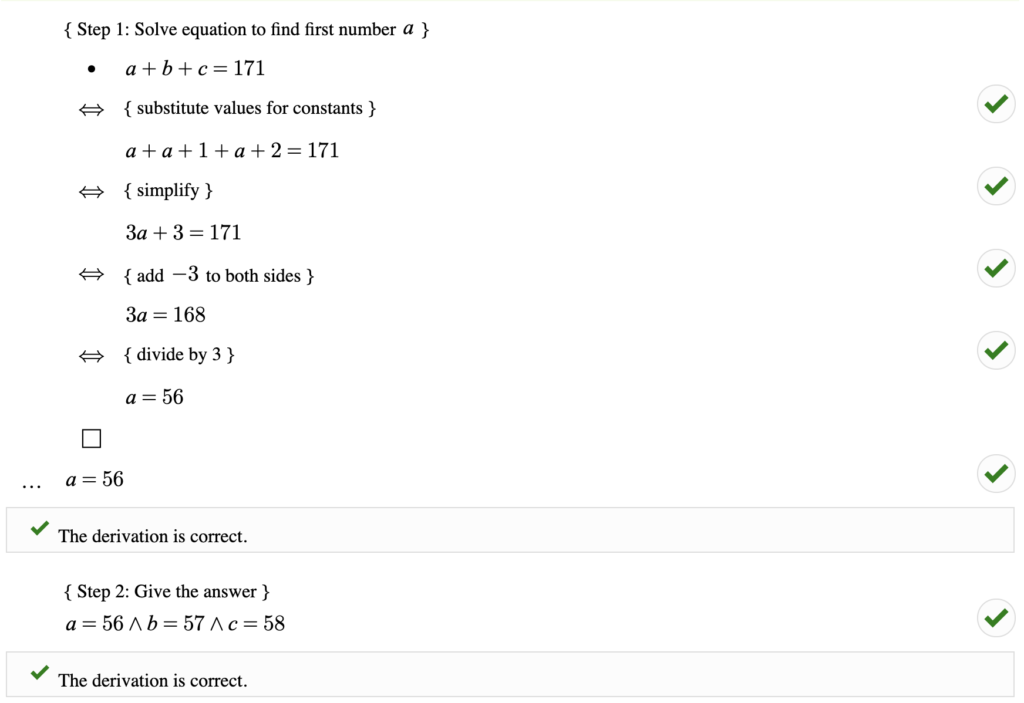
Another word problem example
The video below shows how to solve another word problem, in the same manner as above. Check out this, to see how the systematic approach works.